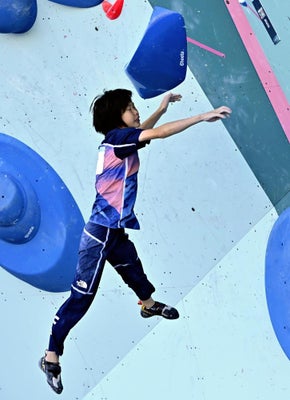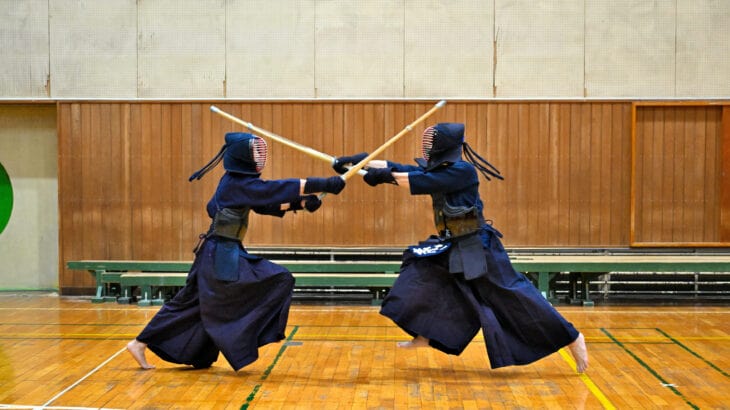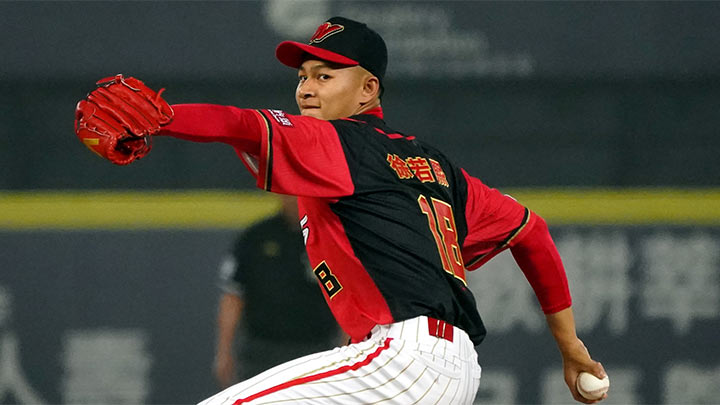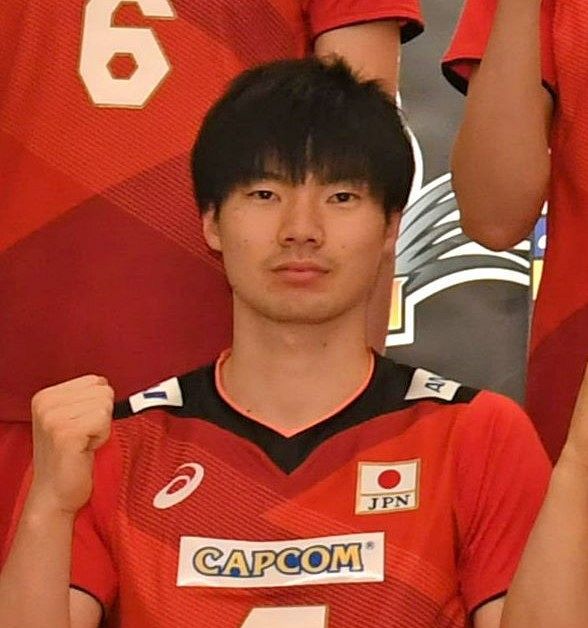
Kendo is more than just a sport. It is one of Japan’s world-class traditional martial arts that combines technique, spirit, and philosophy.
As you can see from the fact that it begins and ends with a bow, this martial art aims not only at acquiring techniques, but also at inner growth and character development.
However, in recent years, the population of Kendo in Japan has been changing due to various factors.
In this article, while looking back at the appeal of kendo and its history, we will consider the current state of the kendo population and the challenges it faces.
We will also explore how Kendo can be maintained as a Japanese tradition and further develop.
目次
- 1 The charm of Kendo and its history in Japan
- 2 Current status of Kendo population in Japan
- 3 Causes and issues of Kendo population decline
- 4 Kendo popularization strategy: Initiatives in Japan
- 5 The road to increasing the Kendo population, mainly among young people
- 6 The role and influence of Kendo in local communities
- 7 Kendo and Japanese culture: Connecting tradition to the future
- 8 Summary: The challenge of Kendo and the pride of Japan
The charm of Kendo and its history in Japan
Kendo is a Japanese martial art with a long history and deep tradition. Its appeal lies in the fact that it goes beyond simply being a sport that moves the body, and pursues spiritual growth and a way of being as a person.
Here, we will introduce the charm of Kendo and its historical background.
The charm of Kendo
Kendo’s greatest appeal lies in its spiritual aspect. In Kendo, politeness and respect for others are valued, as the saying goes, “It begins and ends with courtesy.”
Kendo also encourages inner growth and provides time for self-reflection.
During matches and training, the aim is not only to win, but also to overcome one’s own limits, to improve self-control, to strengthen concentration, etc., and not only to improve one’s skills as a swordsman, but also to grow as a person.
History of Kendo in Japan
Kendo has a long history and is deeply connected to Japan’s samurai culture. It is said that it began as a training exercise for samurai to hone their swordsmanship skills in actual combat, and as time progressed, it developed not only as a martial art but also as a way to hone spirituality.
In the Meiji period, Kendo began to be incorporated into school education and became an important part of Japan’s youth education.
After World War II, its practice as a martial art was prohibited for a period of time, but it was revived shortly after the war, and today it is practiced by many people both in Japan and abroad.
Kendo attracts many people not only because of its technical appeal, but also because of the philosophy behind it and its approach to growth both physically and mentally.
The teachings cultivated over its long history continue to have important value for many swordsmen even today.

Current status of Kendo population in Japan
The Kendo population in Japan has undergone various changes over time. Due to historical background and social changes, their numbers have repeatedly increased and decreased.
In recent years, the relationship between Kendo’s traditional values and modern society has been seen to have an impact on population trends.
Participation trends among young people
There has been a noticeable change in the Kendo population, especially among young people, and although there are many opportunities to experience Kendo through physical education classes and club activities at school, fewer people continue to practice Kendo long-term.
This is because an increasing number of young people find it difficult to continue practicing kendo while balancing their studies, employment, and other leisure activities.
Participation status of working adults
Some people start Kendo after entering the workforce, but this group is relatively small.
Once you enter the workforce, it may become difficult to continue practicing Kendo for various reasons, such as time constraints, physical problems, and even access to a dojo where you can practice Kendo.
However, some working adults take up kendo to maintain their health, relieve stress, or are interested in traditional Japanese culture, and these people form an important component of the kendo population.
Continuation of Kendo for the elderly
Kendo is also an attractive activity for older people, and many people continue to do so, drawing on their years of experience.
Kendo also contributes to maintaining physical and mental health, and for the elderly, it is a way to maintain connections with society.
However, as for overall population trends, there are concerns that the number of generations to inherit Kendo is decreasing due to a decline in the number of young people.
comprehensive perspective
The Kendo population in Japan is influenced by these multiple factors.
Although the value of Kendo as a traditional culture remains high, there are changes in its position and interest in modern society.
In light of these current circumstances, the kendo world needs a variety of initiatives to maintain and increase the kendo population, such as attracting young people, promoting the participation of working adults, and supporting the elderly.

Causes and issues of Kendo population decline
Kendo has been enjoyed by many people as a traditional Japanese culture for a long time, but in modern times the number of people practicing Kendo is decreasing.
There are multiple factors behind this decline, and it has become an issue for the entire kendo world.
The main factors and associated challenges are listed below.
Social changes and diverse options
- Changes in lifestyle : In modern society, lifestyles have diversified, making it difficult to find time to continue practicing Kendo. Young people in particular tend to leave Kendo due to their studies, part-time jobs, and other hobbies.
- Increased choice of sports and recreation : In recent years, there has been an increase in the number of new sports and recreational activities available, giving people more scope for interests other than Kendo. As a result, there is a situation where interest in Kendo is relatively waning.
Difficulty in inheritance
- Aging instructors and lack of successors : Many dojos and kendo clubs are faced with aging instructors and a lack of suitable successors. The difficulty in passing on the knowledge and techniques of experienced instructors to the next generation has affected the spread of Kendo.
- Decreasing interest among young people : It has been pointed out that the spread of digital media has led to a decline in young people’s interest in sports and traditional culture. Conveying the appeal of Kendo to younger generations is becoming an increasingly important issue.
Facility/environmental issues
- Lack of practice facilities : Lack of facilities to practice Kendo is a problem, especially in urban areas. Due to the rising cost of dojo maintenance and management, it is difficult to secure an easily accessible practice location.
- Safety Concerns : Although Kendo is a relatively safe sport, there are some concerns about injury. Especially for beginners and their parents, safety considerations may be a deciding factor in participating.
Transmission of cultural values
- Diminishing understanding of traditional culture : As globalization progresses, there is concern that understanding of Japanese traditional culture and martial arts is becoming diluted. There is a need to find ways to effectively communicate the spiritual and cultural values of Kendo.
Overcoming these factors and challenges requires a collective effort from the Kendo community.
Activities to promote kendo while preserving tradition while adapting it to modern lifestyles and values will likely lead to an increase in the kendo population.

Kendo popularization strategy: Initiatives in Japan
Innovative and practical dissemination strategies are required to address the decline in the Kendo population and bring this traditional martial art to a wider audience.
The following strategies can be considered for efforts to popularize Kendo in Japan.
Strengthening our approach to young people
- Reconsidering the role of Kendo in school education : Efforts are needed to convey the appeal of Kendo and its spirituality to young people through school physical education classes and club activities. It is important to emphasize not only the fun of Kendo, but also its educational values such as courtesy, respect, and patience.
- Holding Kendo events for young people : We will actively hold Kendo-related events that young people can easily participate in, such as workshops, trial sessions, and demonstrations. Disseminating information using SNS is also effective.
Promoting participation of working adults
- Collaboration with companies : We propose Kendo as a corporate health promotion program or team building activity. We will develop a program that allows working adults to relieve stress and maintain health through Kendo.
- Flexible practice schedule : To make it easier for working adults who have limited time due to work or family commitments to participate, we increase the flexibility of our schedules by offering practice times mainly at night and on weekends.
Strengthening support for the elderly
- Programs aimed at maintaining health : We provide programs aimed at maintaining health and rehabilitation so that elderly people can enjoy Kendo safely. The ideal curriculum is to start with the basics of movements and gradually increase the level of difficulty.
- Promoting community formation : We support community formation through Kendo so that the elderly can maintain a connection with society. We will revitalize the Kendo community through social gatherings at dojos and local centers.
Collaboration with local communities
- Introducing Kendo at local events : Demonstrate Kendo at local festivals and events to spread the appeal of Kendo to the local community. Creating a system where local residents come together to support Kendo will lead to its spread.
- Opening the Kendo Dojo to the Community : We will open the Dojo to the community so that local residents can easily experience Kendo. In particular, we will strengthen the role of Kendo dojos as places where children can safely spend time after school.
These strategies are examples of concrete efforts within Japan to spread and pass on Kendo.
It is hoped that by re-recognizing the cultural and educational value of kendo and widely communicating it to society, this will lead to an increase in the kendo population.

The road to increasing the Kendo population, mainly among young people
Strategies to halt the decline in Kendo’s population and encourage young people in particular to rediscover its appeal are important issues for the Kendo world.
Communicating the value of Kendo to young people and engaging them with this traditional martial art requires new approaches and innovative approaches.
Below, we will introduce specific ways to do this.
Redefining contemporary glamor
- Rediscovering the modern value of Kendo : In addition to the traditional value of Kendo, we will discover new appeals and values in modern society and convey them to young people. For example, Kendo can be seen as a solution to the problems of modern people, such as improving mental health, strengthening concentration, and managing stress.
Utilization of digital media
- Information dissemination using SNS : We will disseminate the appeal of Kendo, training sessions, and tournament highlights through SNS, which are frequently used by young people. It is effective to use influencers and swordsmen who are popular with young people to provide content that makes the fun of Kendo more accessible.
- Providing kendo experiences online : We will develop a platform where you can learn basic kendo techniques at home using online teaching materials and video content. This will give young people who have difficulty attending a dojo a chance to experience Kendo.
Strengthening initiatives at educational institutions
- Active introduction of Kendo in school education : Actively incorporate Kendo as a part of school education, increasing opportunities for young people to come into contact with Kendo naturally. We also support Kendo club activities and encourage participation in local tournaments and events.
- Enhancing Kendo Experience Programs : We will regularly hold Kendo experience programs at schools and local communities to stimulate interest and interest in Kendo. It is important to plan content that even beginners can enjoy.
Incorporating the voices of young people
- Youth-led events and projects : We support kendo-related events and projects that are planned and managed by young people themselves. By reinterpreting the appeal of kendo from their perspective, we can help popularize it among the same generation.
Staying motivated
- A sense of accomplishment and reward system in Kendo : In addition to exams for promoting grades and ranks, we have introduced a system that recognizes small achievements to maintain continuous motivation. For example, young people can be motivated by offering rewards such as badges or certificates based on the number of training sessions they attend or the improvement of their skills.
Through these efforts, it is important to aim to increase the kendo population, which is centered on young people, and to fuse the traditional appeal of kendo with modern values and pass it on to new generations.

The role and influence of Kendo in local communities
In addition to its spiritual value, Kendo plays an important role in many areas, including forming bonds in local communities and passing on culture.
Below, we explore more about Kendo’s impact on local communities.
Strengthening local communities
Kendo dojos and schools that practice Kendo often serve as the center of local communities, providing a place for local residents to interact.
Through Kendo, people of different ages and backgrounds can come together and build relationships of mutual respect.
In this way, Kendo strengthens regional cohesion and contributes to the formation of a shared identity.
Youth development and education
Kendo teaches young people the values necessary for living in society, such as courtesy, respect, and patience.
These teachings come naturally through Kendo practice and help young people grow as responsible members of society.
Kendo also acts as a means of self-expression and improves self-confidence.
Inheritance of traditional culture
Kendo has a long history and tradition as one of the Japanese martial arts. The practice of Kendo in local communities plays an important role in transmitting these cultures to the next generation.
Kendo performances at local festivals and events provide an opportunity to celebrate local traditions and foster cultural pride and identity.
Contributing to the local economy
Kendo tournaments and events also contribute to the local economy by attracting participants and spectators to the area.
Many local businesses can benefit from these events, including lodging, dining, and souvenir shops.
Kendo-related industries, such as the manufacture and sale of kendo equipment, also play a role in supporting the local economy.
Kendo can be an effective solution to social problems, such as preventing juvenile delinquency and maintaining the health of the elderly.
For young people in particular, Kendo provides an opportunity to learn about the importance of goal setting and self-actualization, allowing them to develop a positive outlook on life.
These impacts that Kendo has on local communities are more than just a sport or a hobby, and demonstrate that Kendo’s presence greatly contributes to the richness and vitality of local communities.
Through Kendo, we can aim for the development of a local community that fuses tradition and modernity.

Kendo and Japanese culture: Connecting tradition to the future
Kendo is a Japanese martial art whose origins can be traced back to ancient Bushido.
This martial art goes beyond mere fighting techniques and has deep cultural meaning, including spiritual cultivation and the pursuit of moral values.
Even in modern times, how Japanese traditional culture can be passed down to the future through Kendo is an important theme for many Japanese people.
The spiritual value of Kendo
In Kendo, the “do” refers not only to the improvement of technique, but also to the process of self-improvement and moral maturity.
Kendo is based on the principle of “beginning and ending with courtesy,” which means not only respecting your opponent, but also contributing to society as a whole.
In this way, Kendo can be said to be a symbol of Japanese culture that promotes the inner growth of individuals and the improvement of their social skills.
Fusion of tradition and modernity
Kendo is practiced as a combination of ancient traditional techniques and modern sports science.
This balance of tradition and innovation continues to keep Kendo a timeless and fascinating cultural activity.
For example, while traditional techniques are emphasized in Kendo competitions, the latest sports science is incorporated into training methods.
Kendo as a local culture
Kendo is cherished within local communities, and the fact that each region has different characteristics shows the diversity of Japanese culture.
It is not uncommon for Kendo demonstrations to be performed at local festivals and events, and these activities encourage the inheritance and development of local culture.
Passing on to the future
In order to pass on Kendo to the future, it is essential to educate the younger generation. It is important to convey the spirit of Kendo to the younger generation, including incorporating Kendo as part of school education and opening Kendo classes for children, encouraging them to understand its value and become its successors themselves. is.
The deep ties between kendo and Japanese culture go beyond simply passing on techniques, and call for a deeper level of inheritance, such as spiritual values and contributions to society.
The values cultivated through Kendo will be a valuable asset for the young people who will be responsible for the future of society.

Summary: The challenge of Kendo and the pride of Japan
Kendo occupies an important place in Japanese tradition through its long history and deep cultural significance.
Even in modern society, Kendo plays a role in preserving and continuing to convey Japan’s cultural identity and pride in the face of many challenges.
Through this article, we have considered the modern challenges faced by Kendo, strategies for overcoming them, and the value of Kendo.
The challenge of Kendo in modern times
The world of kendo is facing many challenges, such as the declining population of kendo, declining interest among young people, and aging of instructors.
In order to address these issues, it is necessary to rediscover the appeal of Kendo and popularize it, especially among the younger generation, in a way that suits modern lifestyles and values.
The value of Kendo and the pride of Japan
Kendo goes beyond simply learning martial arts; it encourages spiritual growth and the pursuit of moral values.
The spirit of “beginning with courtesy and ending with courtesy” is the basis for fostering the respect and cooperation needed in society.
Kendo also plays a role as a traditional Japanese culture, and its techniques and spirit are valuable cultural heritage of Japan.
Passing on to the future
In order to pass on Kendo to the future, active efforts by educational institutions and local communities are essential.
By passing on the spirit of Kendo to the younger generations, helping them understand its value, and passing it on, Kendo will survive as a lasting culture.
The lessons that can be learned from Kendo have the power to enrich future societies and connect people.
The challenge of Kendo is also a journey that connects Japan’s world-class culture to the future.
Through this journey, Kendo will continue to show the world its value as not just a sport, but as a symbol of Japan’s spiritual culture.





